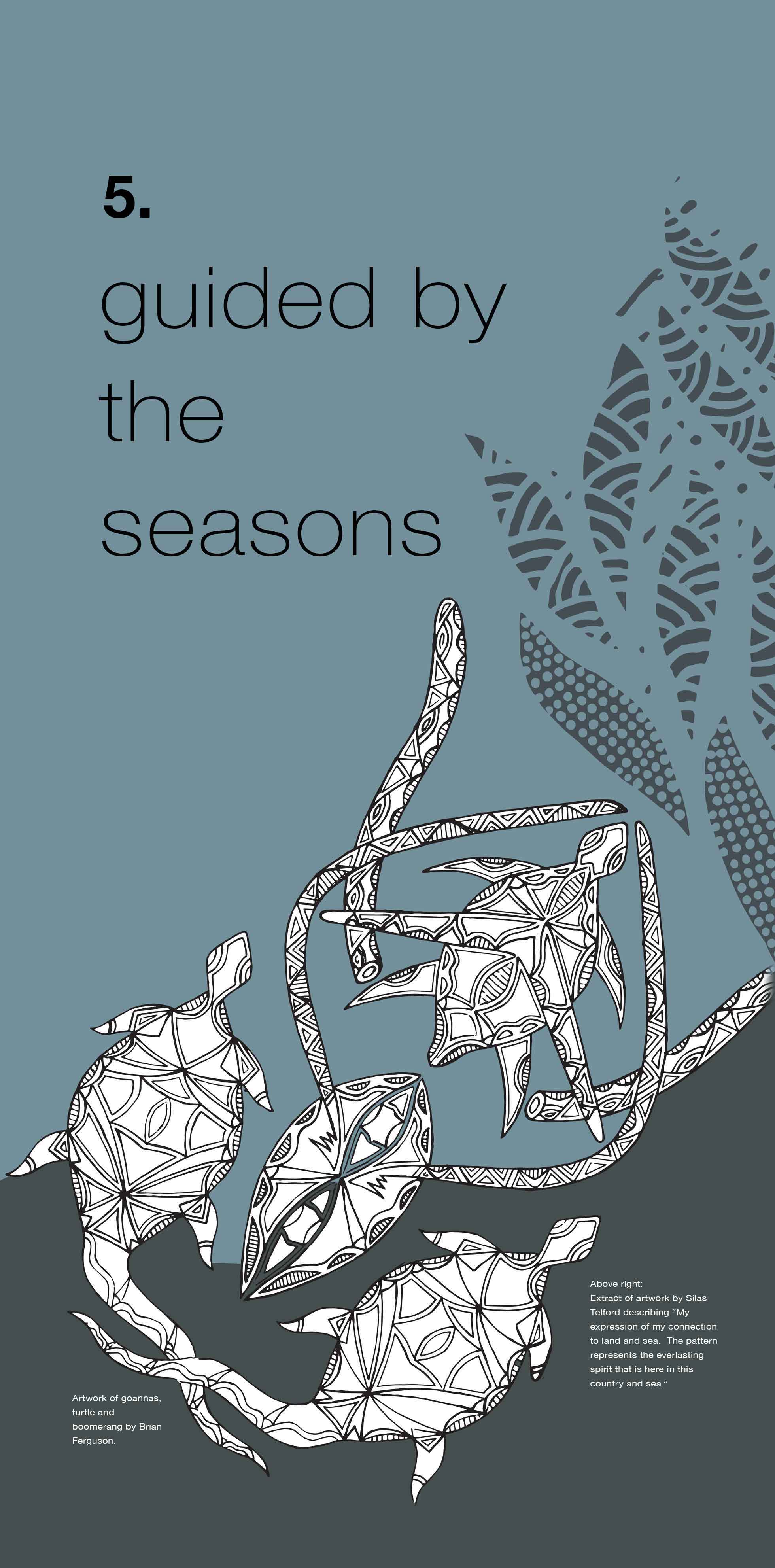Along the Coastal Recreational Path ...

Aboriginal movements on Country were shaped by their cultural calendar in accordance with the natural markers around them dictating the right times to move from one place to another. Early European settlers recollected how groups would suddenly disappear from a locale only to re-emerge at a later time when the seasonal abundance of a local resource guided their return.
The stories in the sign
The scroll through section below presents the information contained in the sign on site at this interpretive node.
As well as allowing you to explore this material again, it means that non-English speaking visitors and others not easily able to read the signs can connect with this content via their mobile devices. Adjust your internet browser settings to activate translation and/or text-to-speech options.
Guided by the seasons
The cycles of natural abundance around Ballina ebbed and flowed with the life of the estuary. The gatherings for the oyster harvests in the mud flats along North Creek were one example of this.
Another was the signs that signalled the mullet runs were about to start. This was something that Uncle Douglas Cook spoke of in an interview in 1983.
[N.B. Reference to this story was also made in the Stage 2 content 'Seasonal Connections' node. ]
In harvesting the mullet, Aboriginal people had some powerful allies in the form of the dolphins (porpoises) living in and around the mouth of the Richmond River. Uncle Henry Cook spoke of this in the interview he did with John Gordon in 1968.
When speaking with Marcus Ferguson in an interview undertaken in 2015, Uncle Lewis Cook also spoke of his memories of how helpful dolphins were in catching a haul of mullet.
[N.B. Reference to this story was also made in the Stage 2 content 'Coastal Lookout' node. ]
Then, in between the times of seasonal abundance there was always a feed at hand if you found a handy cabbage tree palm ...



